Welcome to your definitive 2024 guide on the Best Hacking Books. Our thoroughly curated list encapsulates not only the latest releases but also timeless masterpieces that have the potential to shape you into a seasoned hacker. These selections, each scrutinized meticulously by my team and often part of my personal library, have been essential companions on my hacking odyssey.
Revisiting these books to craft this guide has reignited their worth, and I am thrilled to share the fruits of our extensive research with you.
If you desire a genuine, in-depth review of the best hacking books, sidestepping the commonplace Amazon reviews mash-up, you’ve landed in the right place. We’re dedicated immense effort to ensure this article serves as a reliable compass for your hacking journey.
While some of the included books may date back a decade or more, rest assured their core principles remain as relevant today as they were at the time of publication. No book on this list is obsolete; even older editions offer invaluable insights often overlooked in newer texts. So prepare to delve into these classics and uncover their enduring wisdom.
Table of Contents
- Our Favorite Hacking Books in 2024
- 1 – The Hacker Playbook 2
- 2 – The Hacker Playbook 3
- 3 – Real-World Bug Hunting
- 4 – Hacking APIs: Breaking Web Application Programming Interfaces
- 5 – RTFM: Red Team Field Manual v1
- 6 – RTFM: Red Team Field Manual v2
- 7 – Hacking: The Art of Exploitation, 2nd Edition
- 8 – The Web Application Hacker’s Handbook: Finding and Exploiting Security Flaws
- 9 – Penetration Testing: A Hands-On Introduction to Hacking
- 10 – Kali Linux Revealed: Mastering the Penetration Testing Distribution
- 11 – Ghost in the Wires: My Adventures as the World’s Most Wanted Hacker
- 12 – Advanced Penetration Testing: Hacking the World’s Most Secure Networks
- 13 – Black Hat Python, 2nd Edition: Python Programming for Hackers and Pentesters
- 14 – Honorable Mention: Hacking mit Metasploit, 3rd Edition
- 15 – Bug Bounty Bootcamp: The Guide to Finding and Reporting Web Vulnerabilities
- 16 – Ethical Hacking: A Hands-on Introduction to Breaking In
- 17 – Hands on Hacking: Become an Expert at Next Gen Penetration Testing and Purple Teaming
- Ethical Hacking Courses
- Where To Buy
- Conclusion
- FAQ
Our Favorite Hacking Books in 2024
Below you will find a selection of our favorite books of 2024 by category:
1 – The Hacker Playbook 2
Level: Beginner – Advanced
Author: Peter Kim
Language: English
Publisher: CreateSpace Independent Publishing Platform (June 20, 2015)
Pages: 358
ISBN-10: 1512214566
ISBN-13: 978-1512214567
The Hacker’s Playbook 2‘ firmly holds the crown in our 2024 selection of hacking books. This seminal work was my gateway into the world of hacking, laying a solid foundation for my journey into cybersecurity. It’s a prime pick for beginners, masterfully balancing comprehensive information with an easy-to-follow pace. The guide leads readers through the critical steps of establishing a personal hacking lab and introduces the tools and techniques used by professional penetration testers.
This edition is distinctively tailored as a ‘Penetration Tester Guide,’ in contrast to its successor, ‘The Hacker Playbook 3,’ which leans more towards ‘Red Team’ strategies. For those starting their hacking adventure, I recommend beginning with this edition. Its approachable content and clear explanations provide an excellent starting point before progressing to the more advanced concepts in the third edition.
One of the standout features of ‘The Hacker’s Playbook 2’ is its practicality. It doesn’t just teach hacking; it immerses you in the hacker’s mindset, equipping you with the skills to think and act like a penetration tester. This book is a treasure trove of knowledge, continuously relevant and a must-have for anyone serious about mastering the art of ethical hacking.
2 – The Hacker Playbook 3
Level: Beginner - Advanced
Author: Peter Kim
Language: English
Publisher: Independently (Mai 2, 2018)
Pages: 289
ISBN-10: 1980901759
ISBN-13: 978-1980901754
The Hacker’s Playbook 3 represents a significant advancement from its predecessor, standing out as a seminal work in my selection of top hacking resources. This edition, authored by Peter Kim, surpasses the previous one with its depth and breadth of content, firmly establishing itself among my all-time favorite hacking books.
Kim’s expertise shines as he guides readers through the full spectrum of a penetration test. The book lays the groundwork for setting up a pentesting environment and meticulously navigates through stages including reconnaissance, web application exploitation, network compromise, and innovative social engineering tactics. It also tackles physical attacks and strategies to circumvent antivirus and intrusion detection systems, culminating in masterful exploitation techniques.
Distinctive in this volume is the thorough introduction to web application testing, featuring a practical component with a vulnerable web application. This inclusion enables readers to apply contemporary techniques hands-on, enhancing their learning experience. The coverage spans various attack vectors, from NodeJS and SQL Injection to advanced XSS techniques, garnering high praise from the cybersecurity community.
I have found ‘The Hacker’s Playbook 3’ to be an invaluable asset, frequently revisiting it to refine my skills. Its advanced content makes it an ideal follow-up to the second book, providing a deeper dive into complex techniques and a fascinating comparison of Red Team and Penetration Tester roles.
Additionally, the book excels in addressing a crucial skill in cybersecurity: effectively communicating findings to clients. This aspect of the book underscores the importance of not only technical prowess but also the ability to convey critical information clearly and concisely to various audiences.
3 – Real-World Bug Hunting
Level: Beginner - Intermediate
Author: Peter Yaworski
Language: English
Publisher: No Starch Press (July 09, 2019)
Pages: 264
ISBN-10: 978-1-59327-861-8
Real-World Bug Hunting’ is a vital resource for anyone venturing into the realm of bug bounty hunting and web application security. Authored by seasoned security professional Peter Yaworski, this book, released in 2019, stands out for its contemporary approach and relevance. It’s a top-tier choice for beginners and experienced practitioners alike, offering a comprehensive exploration of web vulnerability types, including Open Redirect, Cross-Site Scripting, SQL Injection, and many more.
Yaworski’s mastery in breaking down complex concepts into digestible insights is evident throughout the book. Each vulnerability is not only explained in detail but also accompanied by real-case reports from the Hackerone Bug Bounty Program. This practical approach, showcasing real-world examples, immensely aids in understanding and applying the concepts.
A notable feature of ‘Real-World Bug Hunting’ is its section on discovering your own bug bounties, which delves into aspects like reconnaissance, application testing, and automating the testing process. Additionally, the book emphasizes the critical skill of report writing, essential for conveying findings effectively.
Reviewers have praised the book for its thoroughness, practicality, and approachability, especially for beginners. While some found it more theoretical, the consensus highlights its utility as a comprehensive guide to modern web hacking techniques and as an essential starting point for aspiring bug hunters.
4 – Hacking APIs: Breaking Web Application Programming Interfaces
Level: Beginner - Advanced
Author: Corey J. Ball
Language: English
Publisher: No Starch Press (July 12, 2022)
Pages: 368
ISBN-10: 1718502443
ISBN-13: 978-1718502444
In the dynamic and critical domain of API security, ‘Hacking APIs’ by Corey J. Ball emerges as an essential guide. This book, lauded for addressing the intricacies of API hacking, is particularly valuable as it delves into a subject often overlooked in cybersecurity literature. Ball, a seasoned cybersecurity consulting manager with extensive industry experience, offers an authoritative perspective on API security testing.
The book comprehensively covers REST, SOAP, and GraphQL API types, setting up a streamlined testing lab, and executing common attacks like targeting API authentication mechanisms and injection vulnerabilities. Its hands-on approach is exemplified in the guided labs targeting vulnerable APIs, where readers practice advanced techniques like JSON Web Token attacks and NoSQL injections.
‘Hacking APIs’ is distinguished by its practicality, providing readers with tools and step-by-step instructions to enhance their understanding of web application security. It’s a perfect blend of theoretical knowledge and actionable insights, suitable for both beginners and experienced professionals. The book’s in-depth coverage includes fuzzing techniques, exploiting authorization vulnerabilities, and tackling GraphQL API attacks, making it a comprehensive resource for anyone keen to master API hacking.
Endorsed by cybersecurity experts, ‘Hacking APIs’ is celebrated for its conversational and engaging writing style, making complex topics accessible. It’s a must-read for those aspiring to excel in penetration testing or to fortify their knowledge in the increasingly vital area of API security.
5 – RTFM: Red Team Field Manual v1
Level: Beginner – Advanced
Author: Ben Clark
Language: English
Publisher: CreateSpace Independent Publishing Platform (February 11, 2014)
Pages: 96
ISBN-10: 1494295504
ISBN-13: 978-1494295509
The Red Team Field Manual (RTFM)’ is an indispensable guide for any serious Red Team member or cybersecurity enthusiast. Far more than a typical study book, it’s a comprehensive reference tool, essential for those moments when you’re in the field without access to Google or extensive documentation. The RTFM is renowned for its succinct and practical approach, offering the basic syntax for commonly used Linux and Windows commands, alongside insights into Python scripting and Windows PowerShell.
As a personal companion on my hacking missions, this manual has been invaluable. It’s compact yet rich with information, covering a wide array of topics from common Windows and networking commands to specific hacking tools and wireless hacking techniques.
The RTFM stands out for its focus on the unique use cases of various tools and includes tips on navigating Windows nuances, such as wmic and dsquery command line tools, registry values, and scripting. It’s a treasure trove of knowledge, saving precious time and providing new techniques for any red team operation.
Whether you’re looking up something quickly or learning new red team techniques, the RTFM is a must-have. It’s a book that doesn’t just reside on a shelf; it’s an active part of your toolkit, to be carried and consulted regularly.
6 – RTFM: Red Team Field Manual v2
Level: Beginner – Advanced
Author: Ben Clark, Nick Downer
Language: English
Publisher: Independently published (July 11, 2022)
Pages: 130
ISBN-10: 1075091837
ISBN-13: 978-1075091834
The ‘Red Team Field Manual v2’ (RTFM v2) is an essential evolution from its first edition, now enriched with over 290 new commands and updated techniques to challenge modern systems. This version makes a significant leap by including a dedicated section for macOS, which was absent in its predecessor.
Notably enhanced in format for easier reading and quicker information retrieval, RTFM v2 is an indispensable tool for red team operations. It covers a vast range of topics from common Windows and networking commands to wireless hacking tools, making it a vital reference in any cybersecurity professional’s arsenal.
The latest edition also features a optionally (paid) comprehensive video library, offering high-quality instruction and real-life scenario demonstrations. These resources, along with assessment questions and challenges, make RTFM v2 not just a manual but an interactive learning experience, beneficial for both aspiring and seasoned Red Team operators.
Whether you’re looking for a quick command reference or immersive training, RTFM v2 stands as a critical resource for anyone involved in offensive security or aiming to understand adversary tradecraft.
7 – Hacking: The Art of Exploitation, 2nd Edition
Level: Intermediate
Author: Jon Erikson
Language: English
Publisher: No Starch Press (October 1, 2007)
Pages: 484
ISBN-10: 1593271441
ISBN-13: 978-1593271442
Hacking: The Art of Exploitation, 2nd Edition by Jon Erickson is a seminal book in the hacking community, often recommended by hackers and cybersecurity specialists alike. Despite its last update in 2008, the book remains highly relevant and valuable, offering a solid foundation of hacking theory and techniques that effectively translate to modern tools and practices.
Erickson’s approach is both thorough and practical. He doesn’t just show how to run existing exploits; he delves into the underlying mechanics of hacking techniques. The book is a deep dive into the art and science of hacking, starting from the fundamentals of C programming and proceeding to advanced topics like buffer overflows, debugging, and cryptography.
Covering a wide array of topics such as programming, exploitation, networking, shellcode, and countermeasures, the book’s eight chapters lead readers through a journey from basic hacking concepts to building security code. You will learn about inspecting processors and system memory using debuggers, outsmarting common security measures, gaining access to servers, hijacking network traffic, and much more.
Praised for its clarity and detailed coverage of complex topics, ‘Hacking: The Art of Exploitation, 2nd Edition’ is considered a must-have for anyone serious about understanding the ins and outs of hacking. It is especially beneficial for those with some programming background, as it provides the tools and knowledge to apply hacking techniques for vulnerability testing and network protection
Be aware, tho, that this book is geared more toward advanced users. We would not recommend picking up this book as a first book. You should be familiar with or have a basic idea of Assembly before starting this book.
Some of the things you learn in this book are:
- Working with the C programming language, assembly, and writing shell scripts.
- Using format strings and buffer overflows to corrupt system memory.
- Inspecting processors and system memory using debuggers.
- Avoid IDS systems.
- Gaining access to servers with port-binding or shellcode.
- Redirecting network traffic and hijacking TCP connections.
- Intercepting wireless traffic using FMS attacks.
- How to run fast brute-force attacks utilizing a password probability matrix.
8 – The Web Application Hacker’s Handbook: Finding and Exploiting Security Flaws
Level: Beginner – Advanced
Author: Dafydd Stuttard, Marcus Pinto
Language: English
Publisher: No Starch Press (October 7, 2011)
Pages: 912
ISBN-10: 1118026470
ISBN-13: 978-1118026472
The Web Application Hacker’s Handbook (WAHH) stands as a definitive resource in the field of web application testing and security. Authored by Dafydd Stuttard and Marcus Pinto, the creators of Burp Suite, this book offers unparalleled insights into web application vulnerabilities and defenses. Its focus on web applications is unique, making it a critical read for anyone serious about cybersecurity.
This extensive guide, at 912 pages, has been thoroughly updated to include the latest technologies and techniques in web application security. It addresses new developments like HTML5, cross-domain integration, UI redress, and advanced attack methods, providing a current and comprehensive overview of the landscape.
The WAHH is particularly valuable for its practical approach. It not only explains common web application flaws but also guides you through exploiting them, offering step-by-step techniques for both attacking and defending web applications. This book is a treasure trove of knowledge, covering everything from leveraging cloud architectures and social networks for exploits to breaking encrypted session tokens and exploiting CSRF tokens.
The second edition of WAHH delves into remoting frameworks, HTTP parameter pollution, hybrid file attacks, and more. It also features a companion website, allowing readers to practice the attacks described and reinforcing the learning experience with interactive vulnerability labs and video tutorials.
The Web Security Academy, a project inspired by the WAHH, continues this legacy. It offers high-quality learning materials and interactive labs, constantly updated with new material, covering the latest in web security research.
For those involved in cybersecurity, WAHH is an indispensable guide. It equips you with the knowledge and skills to discover, exploit, and prevent web application security flaws, making it a highly recommended addition to any ethical hacking book collection
This book covers a lot of different topics. Some of the key concepts you will learn are:
- Leveraging cloud architectures and social networks to find exploits for applications.
- Utilizing the latest HTML technologies to find sophisticated XSS attacks.
- How to use injection exploits, XEE (XML external entity), and HTTP parameter pollution attacks.
- Breaking encrypted session tokens.
- How to exploit REST frameworks, HTML5, CSS, and JSON to gain access to applications and to compromise users.
- How to exploit CSRF tokens and CAPTCHAs.
- Utilizing cutting-edge browser features to gain access to sensitive data across domains.
9 – Penetration Testing: A Hands-On Introduction to Hacking
Level: Beginner – Advanced
Author: Georgia Weidman
Language: English
Publisher: No Starch Press (August 1, 2014)
Pages: 524
ISBN-10: 1593275641
ISBN-13: 978-1593275648
This book was written by security expert, researcher, and trainer Georgia Weidman. Penetration Testing: A Hands-On Introduction to Hacking teaches the fundamental skills that every penetration tester needs. You will build a virtual lab with Kali Linux and a couple of vulnerable virtual machines, and you will run through multiple scenarios in this environment. Tools like Wireshark, Nmap, and Burp Suite are being used in this book, amongst many others.
You will learn how to crack passwords, how to hack wireless networks by brute-forcing with the use of wordlists, you will learn a bit of web application security, you’ll learn about the Metasploit framework, how to bypass antivirus software, and how to take control of a virtual machine to compromise the network. This book, much like Hacker’s Playbook 3, is an excellent first read for people interested in learning Cyber Security.
Some people love the explanation skills of Georgia and swear by them. Some people I know personally also used it as a preparation for the OSCP test. This book has a lot of step-by-step going on, so very easy to understand, even for beginners.
Caveat: Unfortunately, several people have reported that parts of the labs and the external materials in the book are no longer available. So only buy it if you know what you’re looking for! You can follow the author’s Twitter account as she is currently working on the second edition of the book!
10 – Kali Linux Revealed: Mastering the Penetration Testing Distribution
Level: Beginner – Advanced
Author: Raphael Hertzog, Mati Aharoni, Jim O’Gorman
Language: English
Publisher: Offsec Press (June 5, 2017)
Pages: 314
ISBN-10: 0997615605
ISBN-13: 978-0997615609
First things first, this is not one of the Ethical Hacking Books that teach you penetration testing. This is a book that teaches you Kali Linux. Kali Linux, formerly known as Backtrack, is by far the most popular penetration testing distribution out there. Therefore, it just makes sense for you to learn it. Although I do not recommend Kali Linux for beginners, if you do decide to go for Kali Linux anyway, I highly recommend reading Kali Linux Revealed.
In this book, the Kali developers themselves will take you on a journey through the operating system and help you to maximize your use of Kali Linux. You will learn all the fundamentals of Kali Linux, you will learn Linux basics and concepts, and you will learn how to install Kali Linux in all kinds of different scenarios (Laptop, Desktop, Server, Virtual, etc.). On top of that, you will learn how to configure packages and how to keep your Kali installed updated the right way.
They even take you through things like deployment in large enterprise networks and very advanced topics like kernel compilation, the creation of custom ISO files, and encryption. This is why I rate this book Beginner-Advanced. You can definitely learn something new from this book, no matter where you are coming from.
Don’t get distracted by the Amazon ratings. Some people clearly can’t read and complain that there are no pentesting tools taught in this book, which never was its intention in the first place. That being said, if you work with Kali, pick up this book. It will take you to the next level and keep you secure in the long run. You can also check out my article to at least do the bare essential steps after installing Kali Linux as a beginner.
11 – Ghost in the Wires: My Adventures as the World’s Most Wanted Hacker
Level: –
Author: Kevin Mitnick
Language: English
Publisher: Back Bay Books (April 24, 2012)
Pages: 448
ISBN-10: 0316037729I
SBN-13: 978-0316037723
Now one could argue if this fits in the category of Hacking Books or not, but for me, it definitely does. Ghost in the Wires is a book by one of the most well-known hackers there ever was: Kevin Mitnick. So, why would I recommend this book? Because it is a Hacking Book by definition. This book tells the real story of Kevin Mitnick, a computer Hacker that had his prime between the years 1979 and 1995, when he finally got arrested by the FBI after being on the run for several years.
Kevin hacked his first computer system at the age of 16, and from there on out, there was no way back. This book does very well in explaining how a Hacker’s mind works and what drives them. It gives you an in-depth look into the Hacker’s mindset, and that is exactly why I found this book to be extremely valuable. I don’t know how much exaggeration is going on in this book from Kevin’s side, but most of the stories he tells seem to be pretty legit and in the realm of possibility, especially because many of them were confirmed either by the Fed or by his former friends/foes.
I devoured this book in no time. I had so much fun reading it that I blazed through it within a week, which is very unusual for me.
That being said, don’t only focus on learning. Focus on the fun as well, and this book definitely is fun! A must-read for every wannabe Hacker!
By the way, Kevin has worked as a very successful security consultant since the year 2000. He consults Fortune 500 companies and… the FBI(lol). As you can see, he has grown up and works as an ethical hacker now. He also published a couple of other books on stuff like Social Engineering and how to stay safe on the Internet. I won’t list them here because I haven’t read them yet, but you find them in my Amazon Store.
12 – Advanced Penetration Testing: Hacking the World’s Most Secure Networks
Level: Advanced
Author: Wil Allsopp
Language: English
Publisher: Wiley (March 10, 2017)
Pages: 288
ISBN-10: 9781119367680
ISBN-13: 978-1119367680
I had to include at least one more advanced book in this Hacking Books list to satisfy everyone. But no, really, Advanced Penetration Testing has gained a lot of traction lately. It covers ATP (Advanced Penetration Testing). This means it teaches you real-world techniques far beyond the usual Kali Linux tool. You will learn how tools actually work and also how to write your own tools from start to finish.
This helps you to better understand how the tools you use actually work, giving you an edge over anyone who is just able to use out-of-the-box tools.
It also covers a little Social Engineering. A lot of more advanced folks have recommended this book to me.
This would be a good book to pick up after you finish working through the Hacker’s Playbook and the Web Application Hacker’s Handbook. But really, be aware, this is for advanced people only!
13 – Black Hat Python, 2nd Edition: Python Programming for Hackers and Pentesters
Level: Intermediate
Author: Justin Seitz, Tim Arnold
Language: English
Publisher: No Starch Press (April 14, 2021)
Pages: 216
ISBN-10: 1718501129
ISBN-13: 978-1718501126
Python is one of the most popular programming languages in the world, used by millions of coders for everything from web development to machine learning. For those seeking to learn how to use Python for hacking and other nefarious purposes, Black Hat Python is an essential resource. Written by Justin Seitz, a highly-experienced Python developer and security researcher, this comprehensive book guides you through the full range of Python-based offensive hacking tools and techniques.
Whether you’re looking to develop automated penetration testing scripts, create malware, or find vulnerabilities in web applications or networks, Black Hat Python will teach you everything you need to know. If you’re serious about mastering ethical Hacking through Python, look no further than Black Hat Python.
14 – Honorable Mention: Hacking mit Metasploit, 3rd Edition
Now unfortunately for everyone not speaking German, Hacking mit Metasploit isn’t for you, except you can translate it. I want to mention it here because it is, hands down, the best book on Metasploit that I have ever read. The author, Michael Messner, is a developer with the Metasploit team and continuously contributes to the project.
He has in-depth knowledge of the Metasploit framework and has a great way of teaching you all the things you need to know about Metasploit.
I want to mention it there for everyone who is capable of speaking German, and I wish that there will be an English release of the book one day for all of you to enjoy.
15 – Bug Bounty Bootcamp: The Guide to Finding and Reporting Web Vulnerabilities
Level: Beginner
Author: Vickie Li
Language: English
Publisher: No Starch Press (December 7, 2021)
Pages: 416
ISBN-10: 1718501544
ISBN-13: 978-1718501546
The Bug Bounty Bootcamp is a hacking book geared towards people who are interested in learning the ins and outs of Bug Bounty hunting. The book is geared towards beginners (even with no prior experience in Web Application Security) who want to get started in the field of Web Hacking and Bug Bounties.
The book covers everything from choosing your first Bug Bounty Program to writing reports and how to act professionally in this fast-moving industry. You will also learn how to set up your own web hacking lab and how to utilize proxies to capture traffic.
In later chapters of the book, you will learn more about some of the more common web application vulnerabilities like SQL injection, XSS (Cross-Site Scripting), template injection, and how to bypass certain common protective mechanisms.
Another interesting part of the book is that you learn how to chain together multiple vulnerabilities to maximize the impact (and reward) of your findings. This was by far my favorite part.
On top of that, you will also get something extra that is usually not covered in most of the other Web Application / Bug Bounty hacking books out there: an introduction to hacking mobile applications.
Some of the other topics covered in the book are:
- Source Code Reviews
- Finding Vulnerable APIs
- Automating Your Hacking Process
While having some prior experience with hacking or web hacking, in general, is helpful, I found that it is not required to follow along with the book. Vickie did a great job of assuming no prior knowledge so that even beginners could follow along with the content.
Both my team and I really liked the Bug Bounty Bootcamp. This is Vickie’s first book, and she did a great job with it. We recommend it to anyone interested in getting started with Web Application Security or Bug Hunting.!
- The Bug Bounty Bootcamp is a hacking book geared towards people who are interested in learning the ins and outs of Bug Bounty hunting, specifically geared towards beginners with no prior experience.
- The book covers everything from choosing your first Bug Bounty Program to writing reports and how to act professionally in this fast-moving industry.
- In later chapters of the book, you will learn more about some of the more common web application vulnerabilities like SQL injection, XSS (Cross-Site Scripting), template injection, and how to bypass certain common protective mechanisms.
- Another interesting part of the book is that you learn how to chain together multiple vulnerabilities to maximize the impact (and reward) of your findings.
- On top of that, you will also get something extra that is usually not covered in most other Web Application / Bug Bounty hacking books out there: an introduction to hacking mobile applications.
16 – Ethical Hacking: A Hands-on Introduction to Breaking In
Level: Beginner - Intermediate
Author: Daniel G. Graham
Language: English
Publisher: No Starch Press (November 2, 2021)
Pages: 376
ISBN-10: 1718501870
ISBN-13: 978-1718501874
In the ever-evolving world of cybersecurity, “Ethical Hacking: A Hands-on Introduction to Breaking In” by Daniel Graham stands out as a must-read for anyone keen on mastering the art of offensive security. This book is not just another theoretical guide; it’s a deep dive into the practical realm of ethical hacking, offering a hands-on approach that is both engaging and educational.
What Makes It Unique?
- Hands-On Approach: The book is structured to take you from the basics of capturing network traffic to the complexities of crafting sophisticated trojans and executing advanced Cross-Site Scripting (XSS) attacks. It’s a journey through the real-world scenarios that an ethical hacker faces, making it an excellent tool for practical learning.
- Diverse Techniques: Whether it’s writing ransomware in Python, deploying reverse shells, or exploiting websites with SQL injection, this book covers a wide array of techniques. It’s a treasure trove of knowledge for those looking to expand their skillset in ethical hacking.
- Tools and Skill Development: “Ethical Hacking” emphasizes learning by doing. You’ll get to use professional penetration testing tools and even learn to write your own tools in Python, a skill highly valued in the cybersecurity field.
- Advanced Topics: The book doesn’t shy away from complex topics. It delves into the nuances of installing Linux rootkits, performing privilege escalation, and understanding the inner workings of malware like Drovorub.
- Educational Foundation: Developed with feedback from cybersecurity students, the book addresses contemporary issues and techniques, making it a relevant and up-to-date resource.
Who Should Read It?
This book is perfect for beginners who have a basic understanding of cybersecurity concepts and intermediate learners eager to delve deeper. It’s also a great resource for security researchers and malware analysts looking to enhance their practical skills.
Our Takeaway
Daniel Graham’s “Ethical Hacking: A Hands-on Introduction to Breaking In” is an invaluable resource for aspiring ethical hackers. By bridging the gap between theoretical knowledge and practical application, it prepares readers for real-world challenges in cybersecurity. If you’re looking to embark on a journey through the fascinating world of ethical hacking, this book is your roadmap.
17 – Hands on Hacking: Become an Expert at Next Gen Penetration Testing and Purple Teaming
“Hands on Hacking“, co-authored by leading cybersecurity experts Matthew Hickey and Jennifer Arcuri, is a cutting-edge guide that delves deep into the world of offensive hacking techniques. This book serves as a crash course, teaching readers to adopt the perspective of adversaries to better understand the real-world risks posed to computer networks and data.
The book’s approach is both practical and comprehensive, using the author’s extensive experience in hacking into computer networks and educating others in cyber-attacks. It’s a no-holds-barred guide that thoroughly explains the tools, tactics, and procedures utilized by both ethical hackers and malicious actors.
Structured as an immersive journey, the book allows readers to explore computer infrastructures of target companies from a hacker’s point of view. It emphasizes the importance of information gathering, flaw detection, and exploitation, utilizing real-world tools, including those developed by state-actors.
Key topics covered include breaching a company’s external network perimeter, hacking internal enterprise systems, and exploiting web application vulnerabilities. The book is rooted in real-world practicality, avoiding hypothetical scenarios and instead providing practical examples of exploitation.
The authors have designed this book as an introduction to hacking techniques used by malicious hackers, teaching readers how to apply these skills to uncover vulnerabilities. This makes “Hands on Hacking” an ideal resource for entry-level professionals seeking to learn ethical hacking techniques, as well as for business leaders or hobbyists beginning their journey in ethical hacking.
Notably, “Hands on Hacking” provides a structured learning format, guiding readers from basic methods to advanced hacking techniques. It’s not just a theoretical exploration but a hands-on introduction, complete with virtual labs for practical application and skill honing.
Overall, “Hands on Hacking” is an essential read for anyone looking to understand penetration testing and ethical hacking. It’s especially recommended for creating Purple Teams – a mix of attackers and defenders working together to identify and solve security issues. The book covers a wide range of topics, from open-source intelligence gathering to exploiting vulnerabilities in Linux, Unix, and Microsoft Windows operating systems, making it a valuable addition to any cybersecurity professional’s library
Ethical Hacking Courses
Since publishing this post, I have gotten a lot of questions from people who prefer video content over written content. Since I have gone through a lot of Ethical Hacking Courses, I want to share my favorites with you.
My favorite Ethical Hacking Courses are the ones created by Heath Adams, who is more widely known as The Cyber Mentor. No course that I have taken online has advanced my skills more than his excellent Practical Ethical Hacking Course, hands down.
Some other great courses are:
- The Practical Ethical Hacking Course – Heath Adams
- Linux 101 – Brent Eskridge
- Windows Privilege Escalation – Heath Adams
- Linux Privilege Escalation – Heath Adams
There is also an option to get access to all courses for around 30$ per month. I can’t recommend TCM Academy enough.
Where To Buy
You can find all of the books in this article on my Amazon Store. If you buy through this store, I get a small commission from your purchase which greatly helps me out keeping the bills paid. Thank you!
Conclusion
This guide should provide you with a clear roadmap on which hacking books to delve into and the ideal sequence to approach them. Despite technological advancements, I strongly believe that learning from books retains its invaluable charm. It remains my preferred method due to the structured and methodical progression it offers, which aligns with my learning style.
I invite you to share your favorite ethical hacking books in the comments. I’m always eager to explore new suggestions and may incorporate your recommendations into the list. Don’t forget to bookmark this article and revisit it periodically; I’ll be consistently updating the list as time progresses.
FAQ
The best book to become a hacker largely depends on your current knowledge level and specific areas of interest. However, a highly recommended starting point is “The Hacker Playbook 2” by Peter Kim.
This book provides a comprehensive guide to penetration testing and hacking, covering a range of topics from setting up your testing environment to advanced exploitation techniques. It’s written in an accessible manner, making it suitable for beginners and more advanced readers alike.
Ethical hacking is a vast field, and no single book can cover all aspects. It’s advisable to read multiple books and resources to gain a broad and deep understanding of the subject.
Absolutely, books are a great resource to learn hacking, particularly ethical hacking. They provide structured and detailed information on various topics such as penetration testing, network security, cryptography, and more. Books like “The Hacker Playbook” series, “Hacking: The Art of Exploitation”, and “Metasploit: The Penetration Tester’s Guide” are excellent resources. However, it’s important to remember that practical experience is also crucial in this field.
Alongside reading, you should practice your skills in a safe and legal environment, such as a virtual lab or through platforms that offer ethical hacking challenges. Always remember, the knowledge gained should be used responsibly and ethically.
Hackers, particularly ethical hackers, study a wide range of subjects to understand and exploit vulnerabilities in systems. Here are some key areas:
Computer Programming: Knowledge of programming languages like Python, JavaScript, C++, and PHP is essential. Understanding how software is built helps hackers find and exploit vulnerabilities.
Networking: Understanding how data moves across the internet, including the intricacies of TCP/IP, routers, switches, firewalls, and other networking hardware and protocols, is crucial.
Operating Systems: Hackers often specialize in one or more operating systems (Windows, Linux, macOS) to understand their vulnerabilities and exploit them.
Cryptography: This involves studying how information is encrypted and how to decrypt it without a key.
Web Technologies: Knowledge of HTML, CSS, JavaScript, and server-side programming languages, as well as how web servers and browsers interact, is important for exploiting web-based applications.
Databases: Understanding SQL and how databases work is necessary for launching and preventing SQL injection attacks.
Software Engineering: Understanding the software development process can help hackers find vulnerabilities in the code.
Cybersecurity Frameworks and Tools: Hackers need to be familiar with various tools used for penetration testing and vulnerability scanning, such as Metasploit, Wireshark, and Burp Suite.
Social Engineering: This is the art of manipulating people to give up confidential information. It’s a non-technical kind of hacking, but it’s just as important to understand.
Remember, ethical hackers use this knowledge to help secure systems and networks by identifying vulnerabilities and weaknesses.
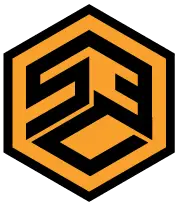

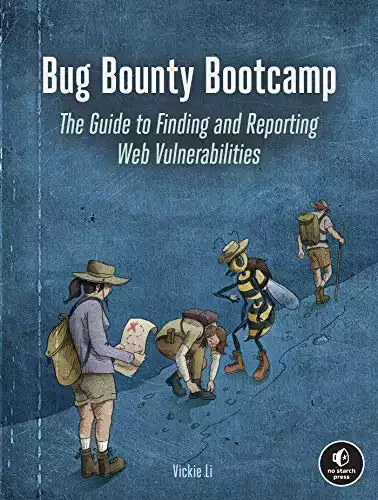
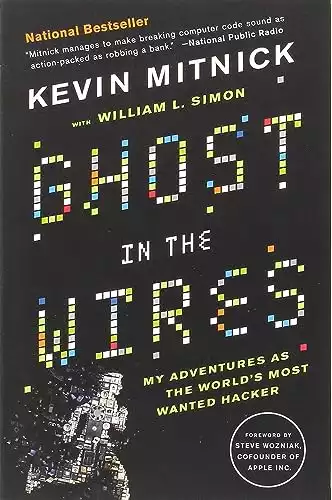
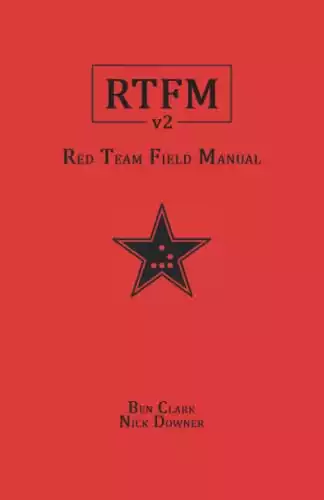
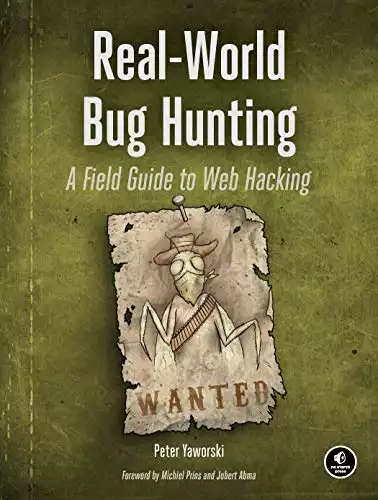
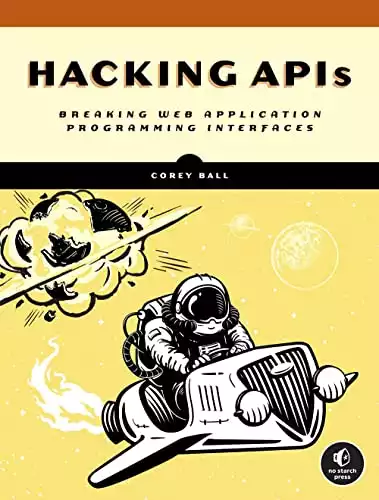
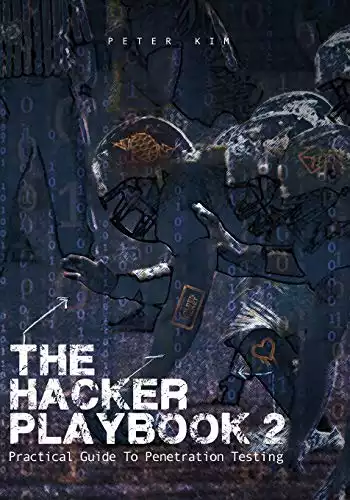




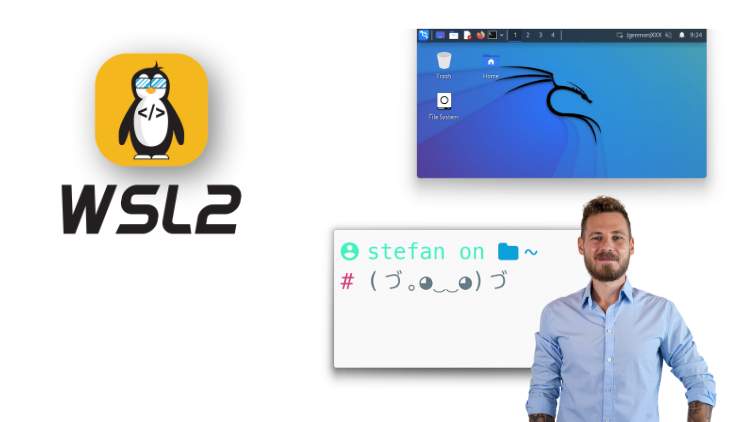













thanks!
Thanks for great post!
You’re welcome!
Your website is one of the best i have ever seen and it is awesome , clear and easy to understand . Keep it going MAN , you’re helping a lot of people !!!
I appreciate this a lot! Thank you for leaving a comment!!
What do you mean by several people reported that parts of the labs and the external materials in the book are no longer available in book number 7?
Exactly what you just said.
So im about to ramp up my Pen Testing career path. Just got down with Linux+ n starting Sec+ from there im going to work on hacking certs. Ive been loosing the excitement for hacking since i started school so im looking for books to spark my joy again to stay motivated… I have added your amazon store and site to my start.me page. I was wondering if you could possible do an article on book to read in the correct order from beginning to advanced?? Also if you could do an article on any insite you have for a best path to follow for quickest career building. Im a lil late in the game to be getting started 32. so i could really use a boost LOL
There is no particular order in which you should read anything first, or any best path. The best path is the path you are most interested in. Also, there are no shortcuts. 32 is not late.
I started programming with 34 and I see no reason why it would be too late.
The best day to start was yesterday, the next best day is today. Keep it up.
Stefan, I’m not sure if you still look here but I am wondering why you didn’t add the 1st Playbook here. I just find it interesting to add part 2 and 3 but skip the 1st.
Hey Chris, of course I do!
That’s simply due to the fact that I did not read the first one and I only wanted to include books that I have actually, at least partly, read (unlike other articles out there.)
If you have an opinion on the first book, gladly let me know!
I’m currently in the process of reading the first one. Once I am completed with it I will give you an update to what my thoughts are on it. So far it has been pretty good. It is very well laid out just like I’m sure the 2nd and 3rd book are as well.
If you are interested, here is a post from the actual author of the series that relates to your question:
Peter here (author of the THP series), I can chime in as well (thanks u/misconfig_exe for letting me know). So, I think everyone has it pretty much on the dot. My first book was really just a collection of notes from my 10 years of pentesting. I loved to teach and my friends/students were always asking for my notes. So I didn’t really expect to sell any (other than to my students and maybe my mom…) and published it myself for kicks (no copy editors or anything like that). Fortunately, it sold really well and people seemed to like the format. So I took a step back and worked on book two. I really tried to clean two up, add a lot more on real world pentesting examples, lots of PowerShell, some labs, and took a lot of the advice I received from the community on what they wanted.
So… three years later and years of running Red Teams (which I state is definitely different from Pentesting in the book), I come out with the third installment, which is almost all new content. Again, the biggest request was more hands on labs. So included in the book is a NodeJS vuln web app, lateral movement VMs (3 VMs), and a custom THP Kali image with all the custom tools. Also, I included a lot of custom code to do Red Team “stuff”. This included tools for cloud attacks, recompiling Metasploit/Meterpreter to get around AV, examples of how to use C to get around AV (keyloggers, droppers, etc), how to be stealthy on the network and most importantly, how to live off the land.
Now back to the question, if you are pretty proficient in pentesting, go straight to 3. If you are pretty new on the topic, 2 will definitely help fill in some gaps (skip book 1). Of course, you can always reach out to me on twitter @hackerplaybook if you have additional questions. Let me know if this helps!
Lastly, I love our amazing security community and I’m so glad I can be a part of it! I’d love to give away some free copies of book 3, so I’ll randomly pick out three comments from this post by the end of Sunday and give away some books. Thanks everyone and keep breaking everything!
-Peter
Hey hey,
thanks for leaving that here!
Which book I should read first I am little bit confusing?
.I am a beginner
First I’d like to thank you for that list. It was very helpful in choosing my first books – I just ordered both written by Peter Kim. I was also considering RTFM, but instead I went for Operator Handbook: Red Team + OSINT + Blue Team Reference by Joshua Picolet. Any thoughts on that one? It was published recently, so I suppose you didn’t have a chance to look at it yet, but I’d appreciate your feedback about it if you ever have a chance.
Hey Michal,
haven’t looked at it, but you can’t go wrong with a Peter Kim book. Let me know how the other books are once you have finished them 🙂
I have read Real World Bug Hunting it was amazing.
Indeed!
Hacking is my hobby
I would also like to add another great book for dummies which is titled, “ABCD of Hacking: The Beginner’s guide” by Shashank Pai K. Start with this book and I bet you would never repent as this book explains from scratch, in layman terms with intuitive examples.